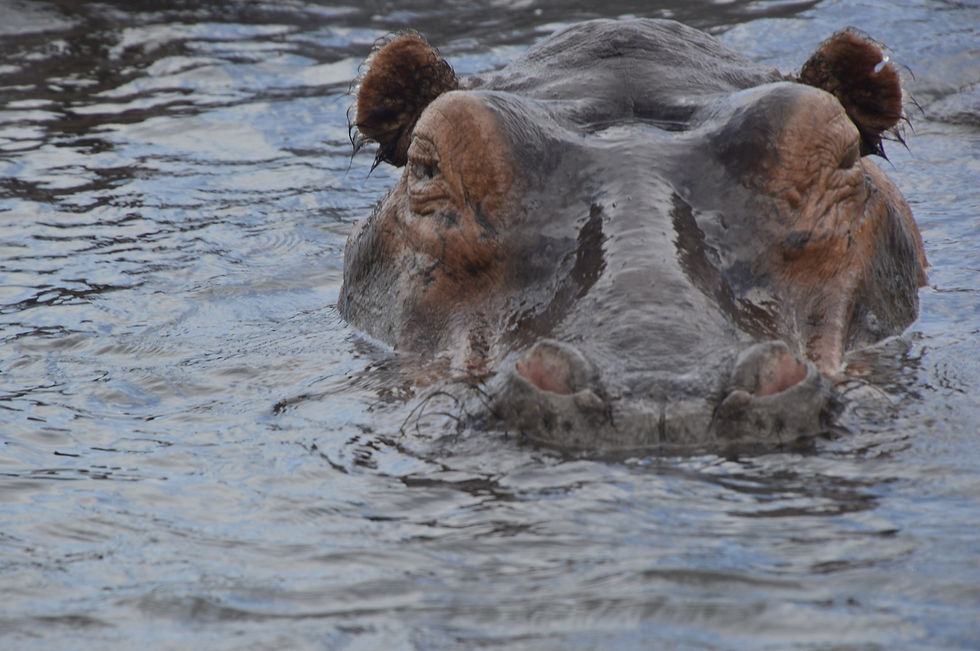Expert Tips for Capturing Wildlife on Safari
- Noe Kasongo
- Aug 13
- 4 min read
Updated: Aug 17
Going on a safari is an adventure like no other. The thrill of seeing wild animals in their natural habitat is unmatched. However, capturing those moments on camera can be challenging. Whether you are a seasoned photographer or a beginner, there are tips and tricks that can help you take stunning wildlife photos. In this post, we will explore expert advice to enhance your safari photography experience.
Understand Your Equipment
Before you even step foot on the safari, it is crucial to understand your camera equipment. Familiarize yourself with your camera settings, lenses, and accessories.
Camera Settings: Learn how to adjust the ISO, aperture, and shutter speed. These settings can make a significant difference in your photos. For wildlife photography, a fast shutter speed is often necessary to freeze motion.
Lenses: A zoom lens is ideal for wildlife photography. It allows you to capture animals from a distance without disturbing them. A lens with a focal length of at least 200mm is recommended.
Accessories: Don’t forget to bring extra batteries and memory cards. You don’t want to miss a great shot because your battery died or your card is full.
Choose the Right Time
Timing is everything in wildlife photography. Animals are most active during certain times of the day.
Golden Hours: Early morning and late afternoon are known as the golden hours. The soft light during these times can enhance your photos and create beautiful shadows.
Animal Behavior: Research the animals you want to photograph. Some animals are more active at dawn, while others may be more visible at dusk.
Weather Conditions: Overcast days can be great for photography as the clouds diffuse the sunlight, reducing harsh shadows.
Be Patient and Observant
Wildlife photography requires patience. Animals do not always behave as you expect.
Wait for the Right Moment: Sometimes, you may need to sit quietly and wait for an animal to come into view.
Observe Behavior: Take time to watch animal behavior. Understanding their movements can help you anticipate when to take a shot.
Stay Calm: Sudden movements or loud noises can scare animals away. Remain calm and quiet to increase your chances of getting a good photo.
Use the Right Composition
Composition is key to creating stunning wildlife photos.
Rule of Thirds: Use the rule of thirds to create balanced images. Imagine your frame divided into nine equal parts and place your subject along these lines or at their intersections.
Framing: Use natural elements like trees or bushes to frame your subject. This can add depth to your photos.
Background: Pay attention to the background. A cluttered background can distract from your subject. Look for clean, simple backgrounds that highlight the animal.
Focus on the Eyes
The eyes are the windows to the soul, even in wildlife photography.
Sharp Focus: Always aim to have the animal's eyes in sharp focus. This draws the viewer's attention and creates a connection with the subject.
Eye Level: Whenever possible, shoot at eye level with the animal. This perspective can create a more intimate and engaging photo.
Experiment with Different Angles
Don’t be afraid to change your perspective.
Get Low: Shooting from a low angle can create a dramatic effect and make the animal appear larger than life.
High Angle: Conversely, a high angle can provide a unique view of the animal in its environment.
Close-Ups: Capture details by getting close to your subject. This can reveal textures and expressions that are often missed from a distance.
Use Continuous Shooting Mode
Wildlife can be unpredictable.
Burst Mode: Use continuous shooting mode to capture a series of images in quick succession. This increases your chances of getting the perfect shot, especially when animals are moving.
Review and Edit: After your safari, review your photos and edit them to enhance colors and sharpness.
Respect Wildlife and Their Habitat
While capturing stunning photos is important, it is equally vital to respect wildlife and their environment.
Keep Your Distance: Always maintain a safe distance from animals. This not only protects you but also ensures that the animals are not disturbed.
Follow Guidelines: Adhere to the rules set by your safari guide. They are knowledgeable about the area and can help you have a safe and enjoyable experience.
Leave No Trace: Be mindful of your impact on the environment. Avoid littering and stay on designated paths to protect the habitat.
Practice Makes Perfect
The more you practice, the better you will become.
Take Photos Regularly: Whether you are on a safari or not, take your camera out and practice. Experiment with different settings and compositions.
Learn from Others: Join photography groups or online forums to share your work and learn from others. Constructive feedback can help you improve.
Study Wildlife Photography: Look at the work of professional wildlife photographers. Analyze their techniques and see what you can incorporate into your own style.
Final Thoughts
Capturing wildlife on safari is an exhilarating experience. With the right preparation, patience, and techniques, you can take stunning photos that tell a story. Remember to respect the animals and their environment while enjoying the adventure.
As you embark on your next safari, keep these tips in mind. Your camera is a powerful tool that can help you share the beauty of wildlife with the world. Happy shooting!



Comments